A mulberry pie is a blackberry pie on steroids: More flavor, more seeds, and more about that in a moment. Locally the Red Mulberries are coming into season. You can find trees with ripe fruit, still green fruit, and many in between. My weeping mulberry (it weeps because I trained it to) is producing a pint a day at the moment, after the birds have their breakfast. This will last for a couple of weeks. Besides the berries young leaves are edible cooked.
Mulberries are usually viewed poorly by traditionalists for landscaping because they consider them “trashy.” This means the trees drop ripe berries on driveways or sidewalks staining them purple… or worse – GASP – on vehicles. As foragers we can see how that problem is really not a problem but many self-seeding mulberries are cut down for that over-fed reason (people worried about where their next meal comes from do not cut down producing fruit trees.)
That said mulberries are also good for your social life, or at least mulberries were for mine and here’s how: I made mulberry pies. Inviting ladies up to your place to see “etchings” was quite passé, sweating together in the gym was not yet in, and bars are always just too loud. But saying something like “I’m baking mulberry pies this weekend, would you like to try some?” hath charm… and it said I cook. Add dancing and one’s social calendar is always full. Unlike a blackberry pie, however, one needs to add just a little acid to each pie — a tablespoon white vinegar will do — and they perk up with an added tablespoon or two of real butter. To read more about mulberries go here.
When I first started my website some five years ago I needed a name. Eat Weeds seemed like a good one. But a British fellow, Robin Hartford, beat me to it so I became “Eat The Weeds.” The rest, as they say, is botanical history. Not surprisingly we have many plants in common as the weeds of Great Britain and Europe came west to North America with the colonists. (One also finds them in Australia and South Africa.) I spent a good amount of time in England teaching there long ago. It’s from the Brits I learned that our Southern Magnolia blossom petals make a nice condiment. I mince the petals and pickle them in a Sweet & Sour solution. This week I noticed Robin — who’s very active in the foraging community — has an article on making “Magnolia Blossom Vinegar.” Here’s the link.
Also fruiting now are Surinam Cherries. They aren’t really cherries and don’t taste like cherries. A month ago they were ripening in south Florida 200 miles away. I picked a few in my yard this weekend off a daughter tree. The mother tree is still ripening. Looking like little red pumpkins (though one variety is black when ripe) it’s a fruit you either can eat or can not. You will either find its flavor acceptable or you will not. No middle-of-the-roaders on this one. But if you are going to try one make sure it is very ripe. The unripe fruit taste awful. To read more about the Suriname Cherry and how to find a really ripe one go here.
What Do You See 10? While taking a walk along Soldier’s Creek last week the sun was highlighting a spot. Two of the plants in the dappled light were interesting. One is quite edible, the other is quite deadly. Can you identify the two species in the photo below? The answer will be here next week or you can go to the Green Deane Forum and find it now.
The answer to last week’s What Do You See #09 is below.
This is one of those photos where you ask yourself do I stop at the genus or do I go for the species as well? Number one is a dock and number two is a true thistle. As all docks and true thistles are (theoretically) edible we don’t have to delve into which species but it is good form to do so. In this case we have, I think, Bitter Dock, Rumex obtusifolius, and Nuttal’s Thistle, Cirsium nuttallii and several of them. We also have other docks and thistles in the state but in the area of Florida where this picture was taken, Hardee Country, they tend to be those two species. And when I say theoretically edible the Bitter Dock is… well… bitter. And the thistles can have more spines than worth the bother. When as large basal rosette, however, the root is choice but there is less to eat after they start flowering like these.
https://www.eattheweeds.com/rumex-ruminations/
https://www.eattheweeds.com/thistle-touch-me-not-but-add-butter-2/
Green Deane’s Upcoming Foraging Classes: Saturday, April 12th, Florida State College, south campus, 11901 Beach Blvd., Jacksonville, 32246 9 a.m. Sunday, April 13th, Wickham Park: 2500 Parkway Drive, Melbourne, FL 32935-2335, 9 a.m. Saturday, April 19th, Boulware Springs Park, 3420 SE 15th St. Gainesville, FL 9 a.m. Sunday, April 20th, Jervey Gantt Recreation Complex, 2390 SE 36th Ave., Ocala, FL 9 a.m.
Book Review: Foraging With Kids, by Steve Brill, ISBN 978-0-9851554-0-7, Copyright 2014.
What does a famous forager do when he becomes a father? Writes a foraging book for kids, and their parents, grandparents, and teachers.
I’m sure the inspiration for Steve’s fourth book was when his daughter, Violet, became old enough to know a clover from an oxalis. Thus Foraging With Kids is more than just a guide to foraging: It’s a father’s labor of true love for his daughter and all children. It’s also a good book for adults.
When to teach children foraging is question that only puzzles modern parents. In the not-too-distant past your parents, relatives and villagers showed you what to eat. Although a child you were very involved in the harvest. Little hands are quite good doing necessary little tasks like collecting and opening acorns. Whether the plant back then had a name or not was of little importance. What was important is you learned through every day living what you could eat, what was medicinal, and what was deadly. Without trying you learned harvesting, storage, preparation, and avoidance. In lean times you also learned to go without. Gathering food was a prime focus of your life. But what about now when most parents don’t forage and kids think food comes from a store? How and when do you start?
First let’s examine a difficult topic all parents will be concerned about. Children are very interested in exploring the plant world around them. The problem is we surround them with poisonous plants, a practice I have yet to understand. We moved off the farm where we were surrounded by cultivated and wild edibles to suburbia where we surrounded ourselves with toxic species. The “why” of that should be worthy of a PhD. thesis. Given such an environment children — usually toddlers or so — comprise the vast majority of plant poisonings in the United States, again not with wild plants but the colorful toxic ornamentals in or around their home. Another poisoning reason is that young creatures, be they child kind, bovine, equine, feline or canine, will chew on stuff that tastes bad or even physically injures them. Why? Because they have not yet learn to discriminate tastes and sensations. There is a time when children are too young to forage. But once they express preferences the game is on. Steve’s daughter, with supervision, started foraging at age two. Equally as important she was learning what plants to avoid. We drown proof our kids so they can enjoy swimming. Why not plant proof them so they can enjoy foraging?
From an educational point of view foraging is more than just about plants. As Steve writes “Foraging is true education for kids, especially with all the associated activities and questions it elicits. These include science, stories, folklore, history, poetry, games, art, cooking and eating natural foods, learning about health and nutrition, discovering where food comes from, and from the experiences of making discoveries, exploring, and playing in nature.” The reason why is that plants were (and still are) extremely important to humanity a point that’s easy to ignore in the modern village.
While the book is quite suitable for adults it does have tips on how to present the material to children and how they learn, which as a former school teacher I can appreciate. The goal is to have them learn a few plants well rather than a lot of plants generally. It is also the author’s intention to make that interesting and fun, no small challenge. There are activities the kids can do on their own (including games) and adult-supervised activities. From a teacher’s point of view there is a lot of material for lessons plans. From a home-schoolers point of view it can be a year-long text book meeting various science requirements.
One forager I studied with, Dick Deuerling, who died last year at 92, used to say often: “I only eat the good stuff.” To that end Brill has featured 76 of the best-tasting, most common and or easy-to-identify species of the 5,000 plus edible species in North America (none with toxic “look-alikes.”) Brill has also solved a common problem by including original vegan recipes which is quite a bonus because recipes for some wilds foods are near impossible to find. Thus kids (and you) can not only learn about plants and the treasure hunt of finding them but also cooking and eating them as well.
Brill also advises us to intentionally look for edibles plants, a view I strongly endorse. While this average can change depending where you are on earth, about 93% of the plants around us are not edible. It’s much more efficient to look for the 7% that are edible. Beginners tend to get very involved with the 93% that are not edible which can lead to frustration and wasted time. They see a plant and want to know if it is edible rather than trying to find a specific edible species. Brill gets you started on finding the edibles with season and habitat guides. The general foraging outlay of the book begins with winter plants — yes you can forage in the winter even in northern climates. Brill lives in New York City. Then comes seaweeds, best in spring, herbs as they arrive in the early to late spring, and edible flowers which are usually mid- to late spring. Fruits and berries usually found in summer followed by nuts and seeds in fall. He also covers some classic mushrooms. Wisely included are some plants to avoid like poison ivy and poison sumac.
Foraging With Kids is not a guide book from someone in the early years of a career. It’s a major work approaching 400 pages from someone with decades of study and experience. You are getting a distillation of foraging knowledge even if the focus is on adapting the material for children. The foraging facts are the same regardless of your age. The book itself is illustrated with pictures not only of the plants but leaf types, plant types and roots. While I think the book is quite usable by adults if you want a wider view Brill has three other foraging books and an application. That said the basic steps Brill includes in Foraging With Kids are good for any beginner regardless of age. They include developing plant identification skills and the art of avoiding pollution. As I explain my foraging students it’s fairly easy to tell a cat from a fox and a fox from a dog. You learned that without much study and you can do the same with plants. They’re not hard to learn. The more difficult skill is deciding if the ground the plant is in or if the water it is getting is wholesome.
Other than him living in New York City, this country boy envies Brill in some ways. I always intended to have a family but ended up a lifelong bachelor (Steve nearly did, too.) As I started out as a teacher I would have like to have written a foraging book for kids. It’s one of those things one thinks about. But perhaps being a teacher was and is not enough. Perhaps it requires something special from the heart of a parent like being a dad.
Foraging With Kids is available in hard copy and as a PDF. As a published author I encourage you to get it or his other titles directly from him. It means less fees going to an assortment of middle moochers. You can contact Brill here.
Though your foraging may drop off during the winter now it’s spring and a great time to study wild edibles with my nine DVD set. Each DVD has 15 videos for 135 in all. They make a great gift. Order today. Some of these videos are of better quality than my free ones on the Internet. They are the same videos but many people like to have their own copy. I burn and compile the sets myself so if you have any issues I handle them personally. There are no middle foragers. And I’m working on adding a tenth DVD. To learn more about the DVDs or to order them click here.
To donate to the Green Deane Newsletter click here.

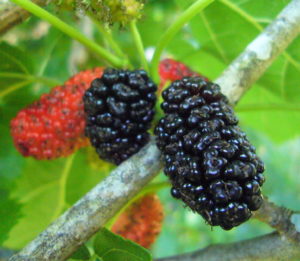

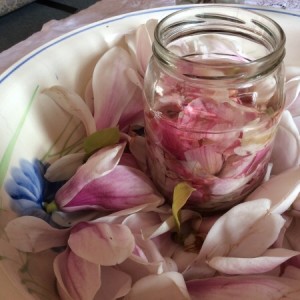
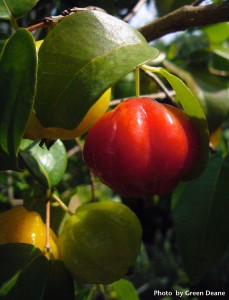
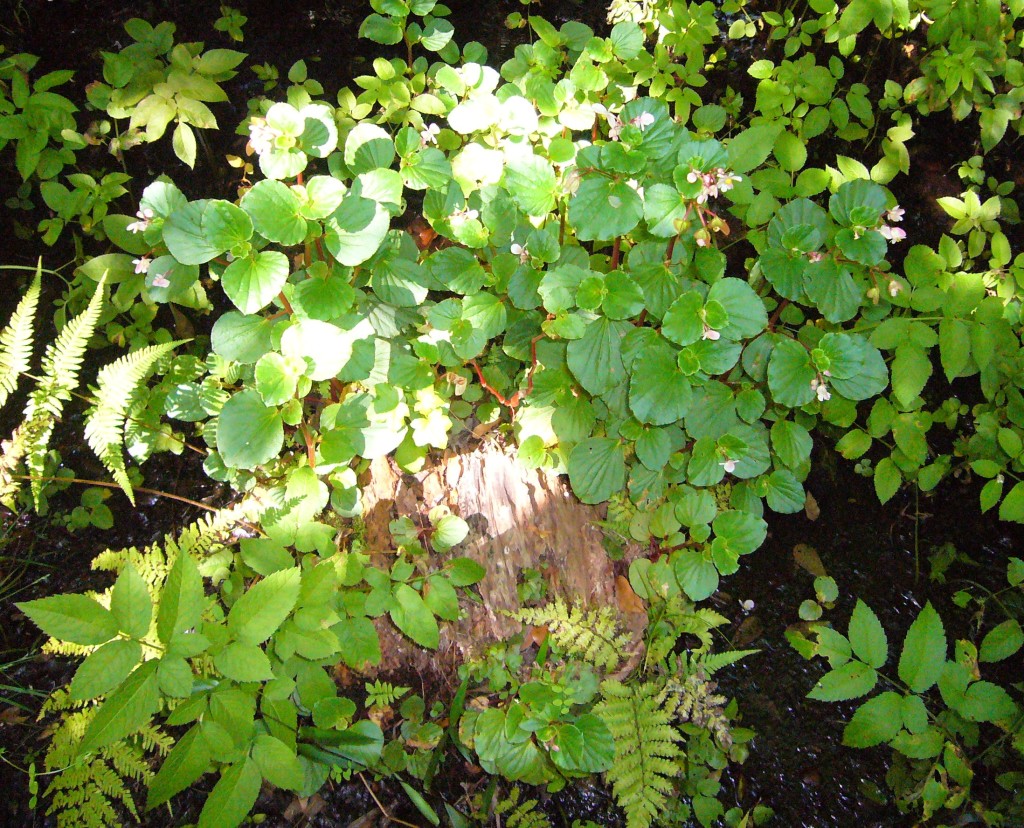
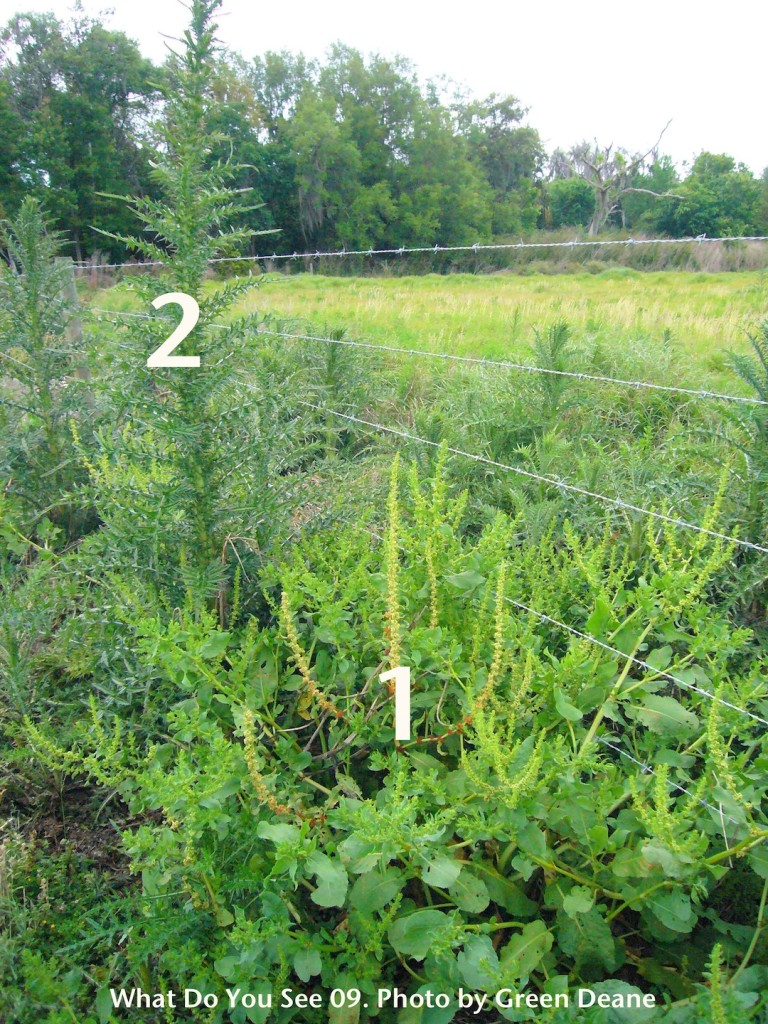
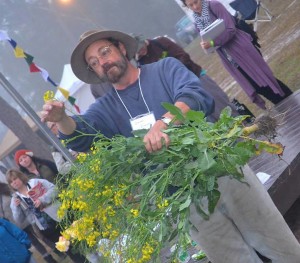
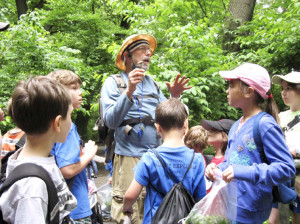
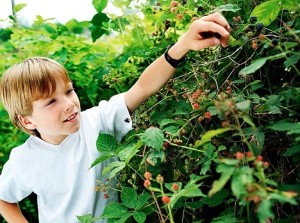
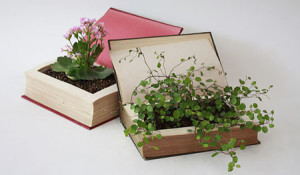
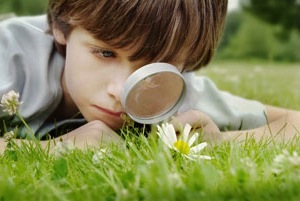
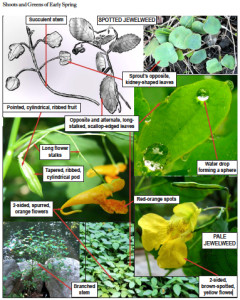
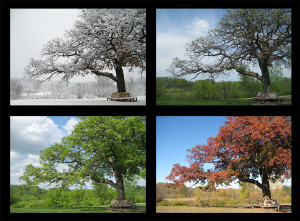
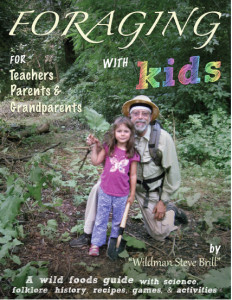


Great review of Kids’ Foraging book. I hope my new book, Florida’s Edible Wild Plants, gets a nice review, too! It’ll be available end of this month.
I enjoy your What do you see?
Peggy
sure, as soon as I get a copy.
ironic this came up today as we were just discussing your new book (favorably) in the Eattheweeds forum at https://www.eattheweeds.com
I’ve pre-ordered your book, Peggy & can’t wait for it to arrive!!!
Hi Green Deane,
Two interesting topics in this newsletter…Mulberries and kids. Several years ago my husband, then boyfriend, introduced me to the Mulberry tree (not bush) growing at the North Carolina Art Museum. I was so excited; I’ve been picking them ever since. I don’t get much because I’m not supposed to climb the trees there and I don’t always get at them when they are ripe. I usually have to freeze them and mix with other berries I forage, like raspberries. I later make jam. On the kids…I would love to start taking my nephew and nieces out for walks to learn about local flora and fauna (so they can step away from the TV) …no foraging, I’m not that good at it and wouldn’t want to harm them…maybe I’ll pick up this book for them and try that. Thanks for doing this… I really enjoy it. I’m also minor entertainment for my friends and family when they can say “crazy Aunt Christine is eating weeds again.” 🙂
So I’d love the recipe to your magnolia blossom pickles.
Am I to understand that all magnolia blossoms are edible and limited only by those that are tasty?
Regarding Magnolia blossom vinegar, can you eat the magnolia blossoms after making the vinegar, since they would be pickled?
In very small amounts, like a condiment.
a day after reading about pies as baits for dates, this headline at msn, about contestants on a reality show:
Pic-sharing ‘Bachelor’ is suddenly full of ‘love’
so pies are good baits for dates!
In my country Sudan which is so big in area that it covers various climatic zones, the colonists have brought with them many plants and weeds. Not far back in history the English have established the well known agricultural Gezira Scheme between the Blue and White Niles in yr. 1925 meant mainly to supply cotton to the textile factories at Manchester city; at the same time it was (now to a little extent) a staple crop. By coincidence while I was writing this, the chief of the Agricultural Research Corporation (ARC once serving Gezira Scheme; but now spread to cover 26 research stations across the whole country ), Prof. I. Aldukhairi in aT.V. talk was urging motivation of pre school children towards educating them in foraging and agriculture in general. He told about how he himseif had reached his career. Similarly today a famous journalist and politician, owner of Omdurman T.V. channel and “Alwan daily journal” H. Khojali has emphasized the role of being intimate with nature from early hood. He advised of considering this issue in the curriculum as earliest in age as possible. On my part I’ve been brought up in Kassaia Town (eastern Sudan) described as “The Green Song”due to its beautiful scenery and being quite and quick fit to bring a foraging child. Finally I cannot finish without mentioning how happy and enthusiastic my lovely grandson “ two years old – Yusuf” when he was collecting acorns under an OakTree in Southampton city during my stay wiith my son last year.